Visa version
Visa
< föregående
|
nästa >
Jämför
< föregående
|
nästa >
Summary of the course
Next scheduled course run: 2013-HT-P2
(autumn term 2013, 2nd period, October-December)
The course is designed as a “hands-on” project course for students who would like to experience the world of nano/microelectromachnical systems (NEMS/MEMS) by having a "hands-on" experience, i.e. by carrying out a microsystem engineering project by designing, fabricating and evaluating tiny but complex devices of sub-millimeter size. This course is given annually, in the 2nd period of every autumn term at KTH (HT-P2; typically last week of October to second week of December).
Course goals:
The students will go through a complete microsystem engineering cycle, as shown in the picture below. Upon completion of the course, they will be able:
- to conceptualize, simulate, and design their own microsystem/microactuator devices for given real-world specifications, by using state-of-the-art simulation and CAD tools,
- to fabricate their own devices in a state-of-the-art 200-mm wafer semiconductor clean-room laboratory, and
- to characterize their device, including the analysis of their failure mechanisms as well as to propose design improvements.
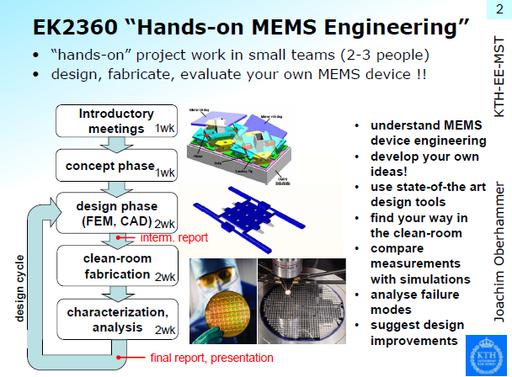
Microsystem Engineering cycle, through which the students will be guided in the course.
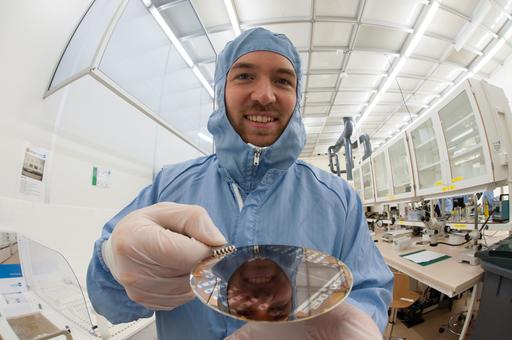
Students (2012 course) fabricating their microsystems in KTH's clean-room. The microsystems are fabricated on such silicon wafers.
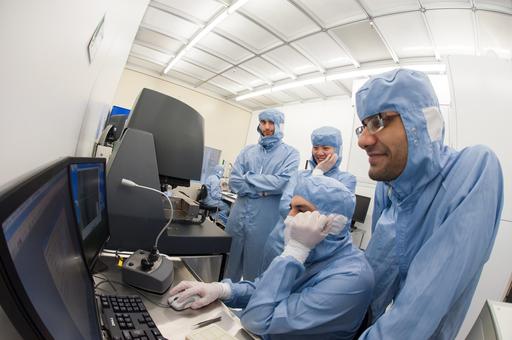
Students (2012 course) in KTH's clean-room during the fabrication part of the microsystems. Here they measure the surface profile of microstructures, to evaluate whether the fabrication processes have been successful.
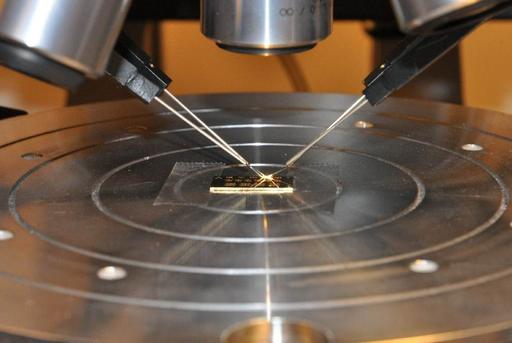
Evaluation of a fabricated chip on a semiconductor wafer measurement probe station (2011 course run). Every student receives such a chip, with his/her own devices and fabricated by himself/herself, as a souvernir after the course.
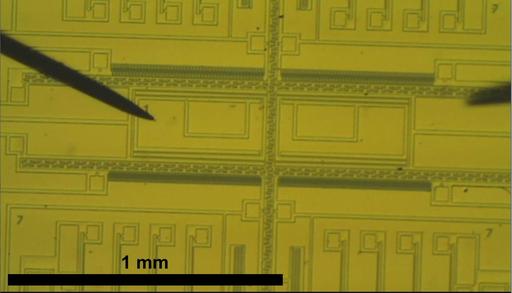
Microscope picture of a microsystem chip fabricated by the students (2011 course run). The probe needles are used for feeding the microsystem actuators with electrical potential, to generate mechanical movements. This chip worked as expected!
Return to main course page.